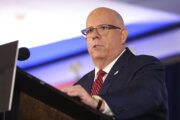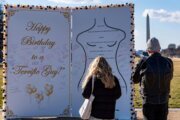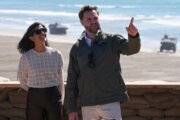Last year, I had the privilege of traveling to one of the most remote places on earth to provide medical care to natives on the island of Batiki (a small speck of land belonging to the nation of Fiji). During that time, my life was in transition — I had just left clinical practice months prior due to burnout and a high degree of job dissatisfaction. I was lost, lonely and in need of a reset.
I signed on with a global charity, Sea Mercy, after learning about them through a connection with their founder, Richard Hackett, on Twitter. Sea Mercy provides medical relief to natives of islands throughout the South Pacific and relies on volunteers — doctors, nurses, dentists and boat captains — in order to reach some of the most remote places on earth. In early August 2017, I began my journey (both physically and emotionally) to help those in the greatest need. After 20-plus hours of flight, I arrived in Suva Fiji and met a longtime colleague and friend, Dr. Suzy Feigofsky, who agreed to accompany me on the volunteer mission only months before. We spent a day catching up on each other’s lives and careers and then set out to meet our co-volunteers.
While many of Sea Mercy’s missions simply involve providing free health care to natives, this trip was a little different. Rather than a small group of medical providers, our team consistent of a group of agricultural experts, teachers, psychologists and support staff. Known as the RISE (Remote Island Soils Education) program, the overall goal was to assist villagers in reclaiming soils for agricultural purposes so that they may become self-sustaining and produce a product that would allow for economic growth. As a medical team, our job was to not only provide health care for all of the island natives but to also provide medical support for the large team of volunteers.
[See: 10 Interesting Ways to Volunteer at a Hospital.]
On the day of departure, we met a group of native Fijian sailors and boarded a restored, original Fijian sailing vessel. While the journey was scheduled to be a three-hour sail, the weather had other ideas. Once we left the security of the protected harbor on the mainland, we quickly encountered very rough seas and high winds. We didn’t know until afterwards, but the sail from Suva to Batiki is one of the roughest passages in all of the Pacific. Swells rose to 15 feet, and winds continued to build to nearly 20 knots. It began to rain and most of our team became saturated, cold, seasick and afraid. After hours of trying to make headway, we ultimately turned back (under darkness) and found a neighboring island where we could escape the high seas and wind. The inhabitants there gave us food and shelter and we all were honestly thankful to be alive. Even though I was scared, physically miserable and unsure of what was next, I felt more alive, and more present in the moment, than I had in years. While I was unaware at the time, I had already had begun a personal transformation — in my past life, I always “sweated the small stuff” and “missed out on the moments.” This was just the beginning for me.
After a couple days of recovery and waiting for calmer seas, we made another attempt to reach our destination of Batiki. We were able to make safe passage and were warmly greeted by the natives of Batiki upon our arrival. Men, women and children all waded into the water to help us ashore — all singing and thanking us with hugs and handshakes. We were immediately ushered into a village gathering place, where we were invited to take part in a traditional Fijian “welcoming ceremony” reserved for very special guests. My first impression of the people of Batiki was their unwavering happiness and love for one another and for a very simple life. The accommodations were basic on Batiki — no running water, no electricity. Homes varied from wooden structures to open air lean-to’s. But everyone was happy with what they had. We were taken in by various families and welcomed into their homes in the village of Mua, where we would live and work alongside the villagers during our two weeks on the island.
[See: Creative Ways Hospitals Reach Diverse Populations.]
The next day, we began setting up our village clinic. The local nurse was incredibly friendly, resourceful and happy to see us. We immediately went to work — patients began flooding in. In fact, the entire primary school showed up all at once. Dr Suzy was immediately engaged with the children, allowing each one to listen to their own hearts with her stethoscope. Adults of all ages came in and before we knew it, we had diagnosed diabetes, hypertension, lupus, neurofibromatosis and a retinal detachment. I had no EMR, no front desk staff, no insurance company and no hospital administrators interrupting my day. My time was solely and completely devoted to my patients. It was exhilarating. That evening, I cried. I’m not even sure why — I just knew that I was happy and fulfilled and that I was doing good work. I couldn’t wait to go back to the clinic the next day.
Clinic continued on at a more easygoing pace over the coming days. We got to know families and gained an understanding of what challenges they faced every day. One particular day, Dr. Suzy and I split up in an effort to see villagers in multiple locations on the island. I made house calls, while Dr. Suzy and a team of volunteers hiked across the island to a village that had been decimated by Cyclone Winston in 2016 and not yet rebuilt. I was charged with making “house calls” to see the less mobile residents of Batiki. While I can’t speak directly to the moving experience that Dr. Suzy had while visiting Naigani, I was amazed at the stories she told upon her return — stories of life and death and survival, fears of losing children in the flooding and wind. We’ll leave that for her to tell on another day. As for me, I was able to gain a real appreciation for how little the people of Batiki really have. When I entered the homes of my house-call patients, I was able to see firsthand what every day was like for them. Few possessions, limited clothing and no modern conveniences. However, each patient had a story to tell. Elderly patients living with the sequelae of strokes, crippling orthopedic injuries and chronic disease — but they all faced every day with a smile. I was invited into each home with a smile and a warm, welcoming “Bula” (hello in Fijian). No one complained, and everyone was clearly grateful that we were there. Some of my patients just wanted to talk and learn about Western culture. Others wanted to tell me about their kids and their life on the islands. Interestingly, not a single native mentioned wanting to leave Batiki — and no one wanted any of the things that all of us would deem a basic necessity.
[See: How to Be a Good Patient Wingman.]
Each night, Suzy and I would chat and share our experiences from the day. As each day went by, I felt myself changing. I was becoming more aware of the little moments that mean so much. While I missed my family and friends at home, I became aware of a connection with the villagers with whom I now lived. Some nights, we would all sit together (volunteers and villagers) after dinner, when the sun had set, and play cards, talk, listen to music and drink Kava. Now that was another very unique experience — Kava is a local tradition, a drink derived from the Kava root. It has mystical properties and is a mild sedative. Villagers treat the drink with a sacred reverence, and it’s consumed as part of a Kava ceremony. It became a way for the villagers — and the foreigners — to bond.
Days continued on with lots to do on the island, and soon we developed a daily routine. But as my time on the island came to an end, I began to realize what’s right with medicine on Batiki: It was akin to being an old country doctor for a small rural town. I was part of something far bigger than myself. Medicine was about the patient, the family, the ties to the town or village. There was no pressure to do more in less time, no insurance company, no EMR and billing and coding. There were just people. People who needed my help. People who found happiness in so little. People who became my friends and (in some cases) my family.
As Suzy and I sailed away and prepared to go back to America, I was filled with emotion. I was not the same person I was when I arrived on the island — and I never would be again. Even with all my faults and shortcomings, I had done something good. Something much bigger and more important than achieving an academic promotion, a first authored article in the New England Journal of Medicine or a bigger and better job. I had finally really made a difference. For the first time, I really understood what it is to be a doctor and to truly serve others. I was no longer lost. I was clear in my path forward.
Months have passed now, and I long for the warmth of the people of the South Pacific. I miss their smiles and their laughter. Batiki and Fiji call to you, and once you’ve been there, you’ll always feel as if something is missing back home. Fortunately, I’m headed back in just a few weeks. Dr. Suzy and I will be sailing to another group of islands know as the Southern Lau. This time, we’ll live on a 47-foot catamaran with six other volunteers and sail from island to island hoping once again to make a difference — in the lives of the villagers, and in our own lives, as well
Note: If you would like to participate in a future trip with SeaMercy, please reach out to me or Dr. Suzy, or visit SeaMercy.com for more information.
More from U.S. News
5 Wacky Ways Real People Have Stayed Active While Traveling
How to Find Quiet in a Noisy World
Why Are Some People Always Hot and Others Always Cold?
Finding the Lost Art of Medicine in the South Pacific originally appeared on usnews.com







